The History of Embroidery and Cross-Stitch
Introduction to Embroidery History
Embroidery, the art of embellishing cloth with designs created using needle and thread, has roots that extend back to ancient times. This timeless craft, encompassing various needlework techniques and textile art history, has evolved over millennia, influencing cultures worldwide and giving rise to specific methods like cross-stitch, a popular form of counted-thread embroidery known for its X-shaped stitches.
The term 'embroidery' originates from Middle English, derived from the Old French word 'broder,' meaning edge or border. It includes a wide range of stitches and styles, with cross-stitch being one of the most recognizable due to its simple X-shaped stitches, often used in historical textile art and needlework history.
Have you ever wondered about the origins of embroidery and its historical development in ancient civilizations?
Was it 1,000 years ago? 2,000 years ago? Beware of anyone claiming definitive knowledge, as the precise beginnings of embroidery history and embroidery origins are shrouded in antiquity.
The historical roots of embroidery delve deep into the centuries. As a delicate craft, embroidered pieces are not long-lasting; even in museums, they require special conditions to prevent deterioration. This fragility makes tracing the exact evolution of embroidery and historical embroidery techniques challenging.
The earliest embroidered fabrics had little chance of surviving through the ages, yet archaeological evidence provides insights into the origins of embroidery.
Embroidery's emergence is closely tied to the invention of the first stitch in clothing production, dating back at least 30,000 years. Early embroidery supplies might have included animal veins and natural fibers like hair. Naturally, no direct evidence from that era remains, but archaeological finds, such as fossilized hand-stitched garments from around 30,000 B.C., support this timeline in the history of needlework and ancient textile decoration.
Ancient Embroidery in Civilizations: Origins and Techniques
In ancient Egypt, mummies were often wrapped in garments embroidered with gold thread, and the robes of kings and nobles featured intricate designs, as did the trappings of their chariots. These ancient embroidery techniques utilized threads of linen and wool, goat and camel hair, and fine strips of gold and silver, highlighting the sophistication of Egyptian embroidery in embroidery history.
Such exquisite work has been discovered on mummy wrappings, exemplifying early Egyptian embroidery:
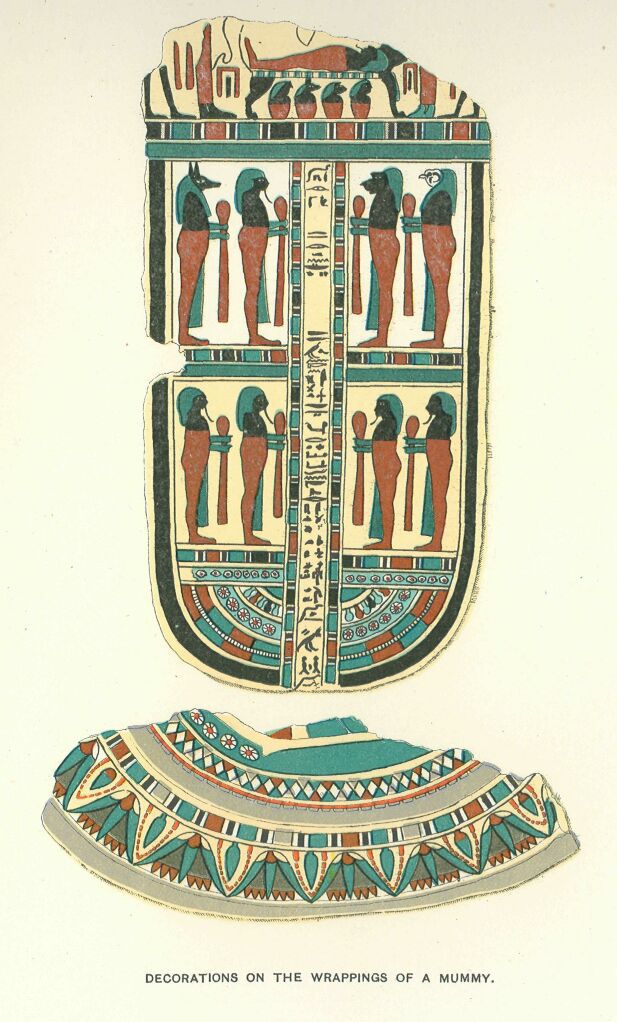
According to the Bible, Moses adorned the Holy of Holies with a veil of fine linen embroidered with cherubim in blue, purple, and scarlet. Similarly, the temple built by Solomon in Jerusalem featured an embroidered curtain, exemplifying early religious embroidery in history and textile art history.
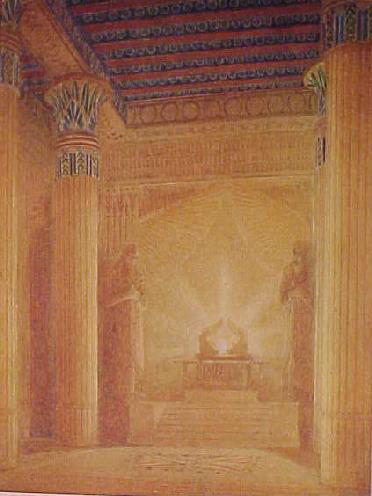
Long before the Christian era, civilizations like Babylon, Persia, and Sidon had perfected embroidery. Alexander the Great was reportedly dazzled by Persian embroidered specimens, underscoring the excellence of Persian embroidery. Meanwhile, China and India developed the art early on, with evidence from the Han Dynasty (206 BCE – 220 CE) showing intricate silk embroideries, marking key points in the history of silk embroidery and Chinese embroidery.
Sculptures from Bharhut and Sanchi, dating to the 2nd and 1st centuries B.C., depict figures adorned with embroidered veils and headbands, providing insights into ancient Indian embroidery and embroidery in ancient civilizations.
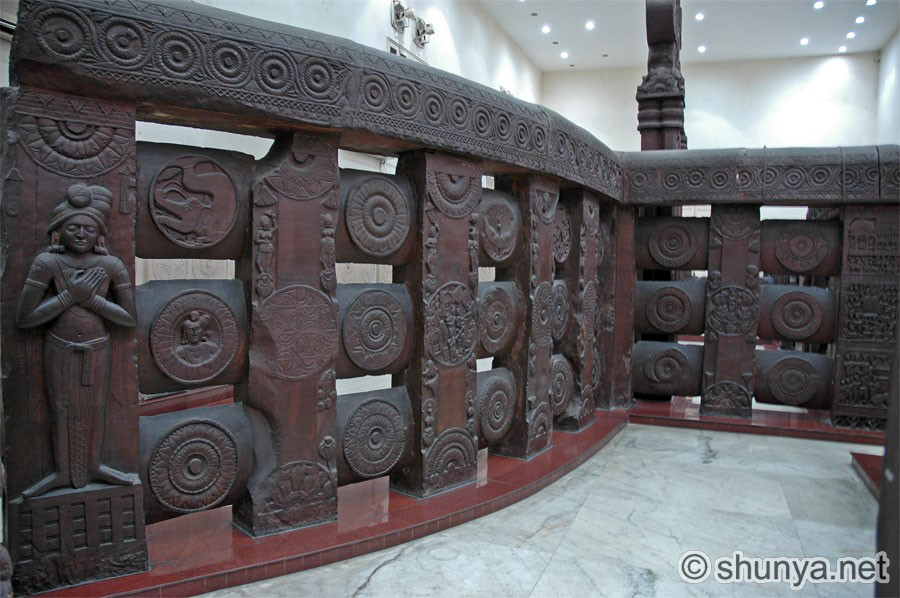
Historical Records and Sources in Embroidery History
For later periods, information on embroidery comes from written and artistic sources, enriching our understanding of embroidery origins and development across cultures.
For instance, Liu Xiang, a renowned Confucian scholar (79-8 BCE), mentioned in his work Shuoyuan ("Garden of Stories") that silk embroidery was already in use in the state of Wu. This indicates that silk embroidery was well-established by his time, suggesting it is at least 2,000 years old in the annals of Chinese embroidery history and silk embroidery history.
Medieval Embroidery: Techniques and Examples
The Middle Ages (476 AD – 1492 AD), also known as the Medieval period, have bequeathed us numerous embroidery samples. Professional embroiderers' guilds existed in Europe from at least the Middle Ages, producing high-quality medieval embroidery and medieval needlework.
Much can be learned about European medieval embroidery from painted artworks, which often depict detailed needlework.
An example is the icon depicting Saints Boris and Gleb from Moscow, mid-14th century:
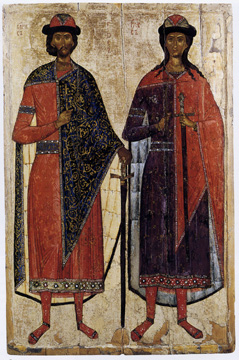
(State Russian Museum, Saint Petersburg) This piece vividly illustrates the intricate details of embroidered fabrics in medieval times, showcasing medieval embroidery techniques.
Another famous example is the Bayeux Tapestry (circa 1066), which narrates the events leading to the Norman Conquest of England, including the Battle of Hastings, and is a prime example of medieval embroidery techniques and historical embroidery.

A notable portion of the tapestry shows Harold struck in the eye by an arrow, showcasing the narrative power of embroidery in history and the Bayeux Tapestry's significance.
Examining works by renowned European painters reveals abundant embroidery designs in ladies' dresses, kings' garments, knights' attire, and even peasants' clothing. During the Middle Ages, fashion, like society, was influenced by the feudal system's hierarchy, reflecting the social aspects of medieval needlework and embroidery history.
Surviving pieces of medieval Eastern embroidery also exist, providing a global perspective on embroidery history and textile art history.
Here are some examples:
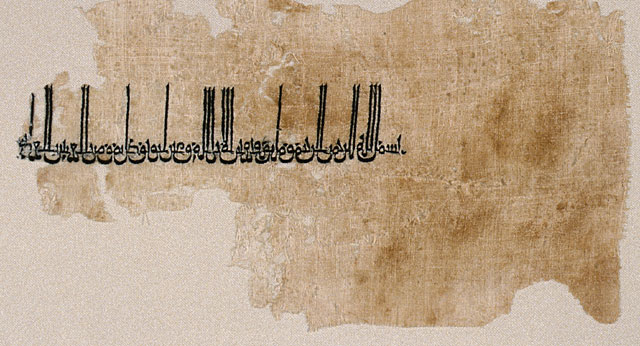
Egyptian Tiraz inscription, 10th century; silk embroidery on linen (Los Angeles County Museum of Art, M.73.5.635), an exemplar of medieval embroidery.
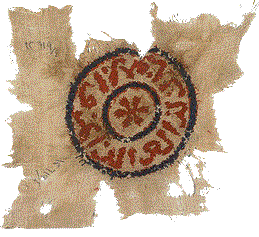
Silk Textile with Six-Petaled Flower, Bahri Mamluk period, 13th century; red and blue silk embroidery on white silk (Museum of Islamic Art, Cairo), highlighting silk embroidery history.
These pieces are clearly the work of Muslim artists, contributing to the diverse history of embroidery in ancient civilizations and medieval periods.
A common misconception is that Islamic culture prohibits figural imagery entirely. While this holds in religious contexts—such as mosque decorations—figural images were prevalent in secular art, particularly at Islamic courts. For example, ivory caskets from Muslim Spain feature carved scenes of courtiers, musicians, birds, and animals, often complemented by embroidered textiles, enriching textile art history.
Many surviving Persian textiles include human figures, illustrating the richness of Persian embroidery:
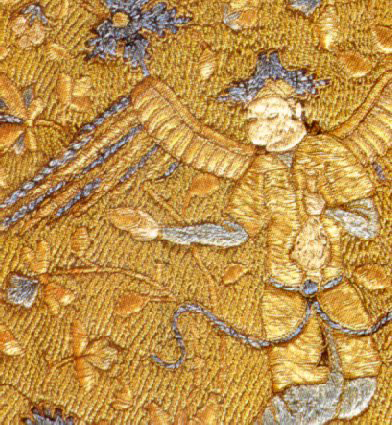
Detail of a Persian Cloud Collar, early 15th century, a notable piece in Persian embroidery history.
The Evolution of Cross-Stitch: From Ancient to Modern Times
Cross-stitch, a specific form of embroidery using X-shaped stitches to form patterns, has its own fascinating evolution. Its roots trace back to around 500 AD in Egypt, with preserved linens from tombs showing early examples of cross-stitch techniques. It flourished during China's Tang Dynasty (618-906 AD), likely spreading westward via trade routes like the Silk Road, influencing the global history of cross-stitch and cross-stitch evolution.
In Europe, cross-stitch gained prominence in the Middle Ages and Renaissance, often associated with upper-class women as a symbol of leisure and skill. The first printed cross-stitch patterns appeared in the late 1500s, following the invention of the printing press, which democratized the craft and advanced the evolution of cross-stitch.
By the Anglo-Saxon period in the UK (around the 7th century), intricate examples emerged, and samplers—practice pieces showcasing various stitches—became common from the 1400s onward, with collections like those at the Victoria and Albert Museum holding over 700 examples up to the 20th century, documenting the history of needlework and cross-stitch history.
In the modern era, cross-stitch transformed into a popular hobby in the 1960s, with easier pattern production. The 21st century saw innovations like subversive cross-stitch, pioneered by Julie Jackson in 2003, blending traditional techniques with contemporary, often humorous or edgy themes, continuing the evolution of embroidery and modern needlework.
The art of embroidery, including cross-stitch, continues to thrive and evolve in contemporary times, blending ancient traditions with modern creativity, ensuring the enduring legacy of textile art history and embroidery history.